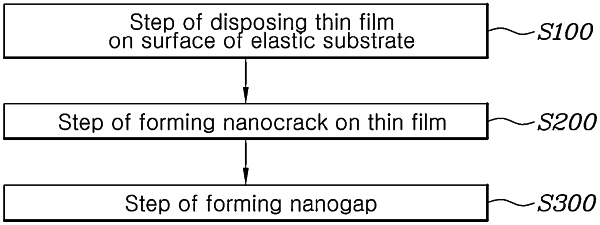| CPC G01N 33/005 (2013.01) [G01N 33/0016 (2013.01); G01N 2033/0019 (2013.01)] | 15 Claims |

|
1. A method for manufacturing a hydrogen sensor, the method comprising the steps of:
disposing a thin film made of a transition metal or an alloy thereof on a surface of an elastic substrate;
applying a tensile force in a repetitive manner to the elastic substrate to form a nanocrack on the thin film disposed on the surface of the elastic substrate; and
injecting hydrogen gas into the formed nanocrack and then removing the hydrogen gas to form a nanogap,
wherein the tensile force in the step of forming a nanocrack is applied to an extent that the elastic substrate has a tensile strain of 25% to 100%.
|